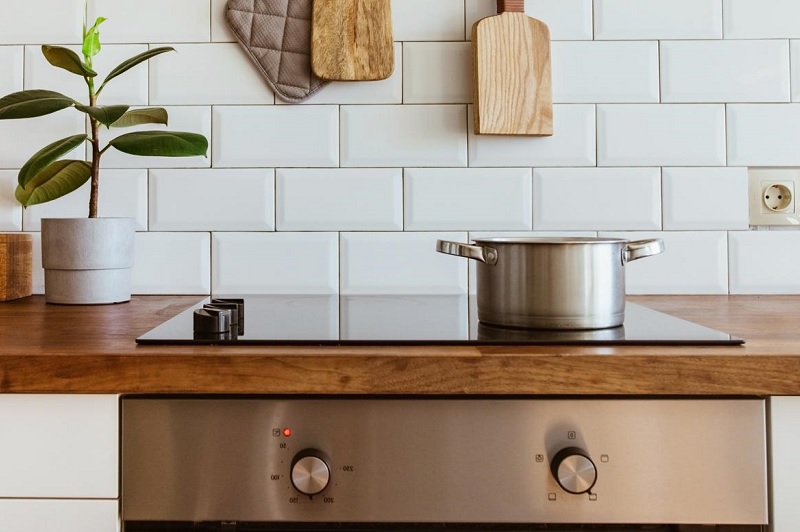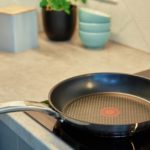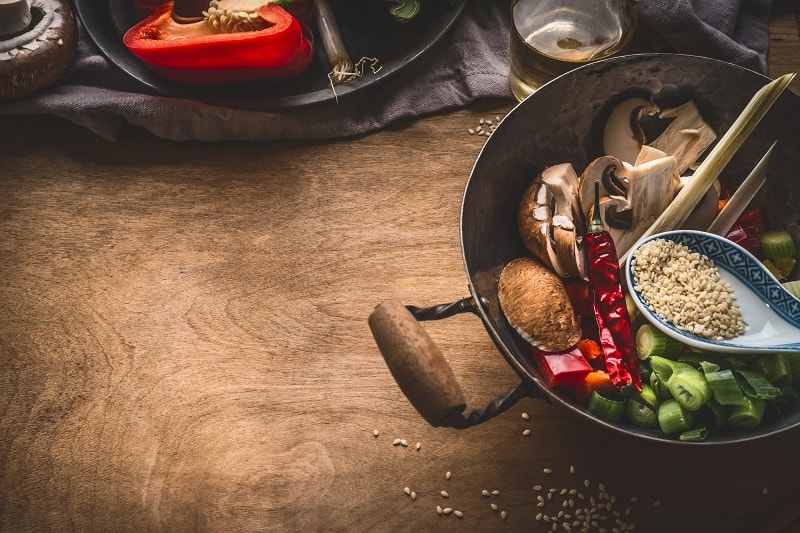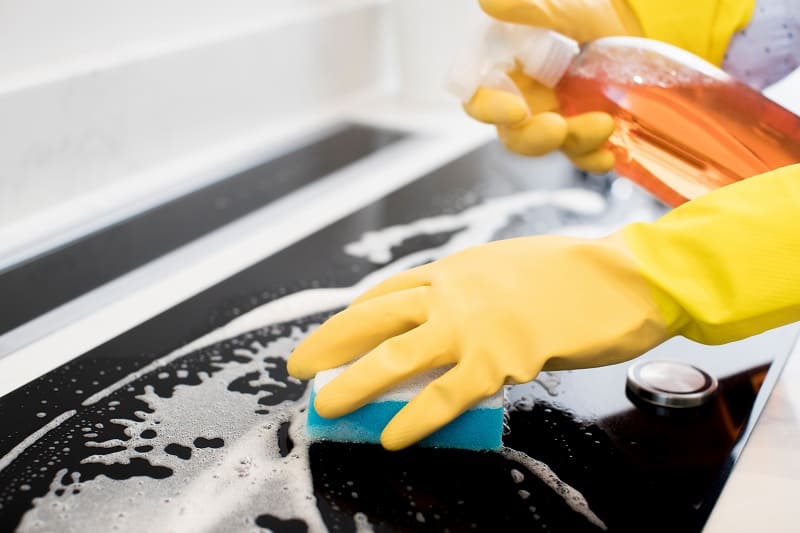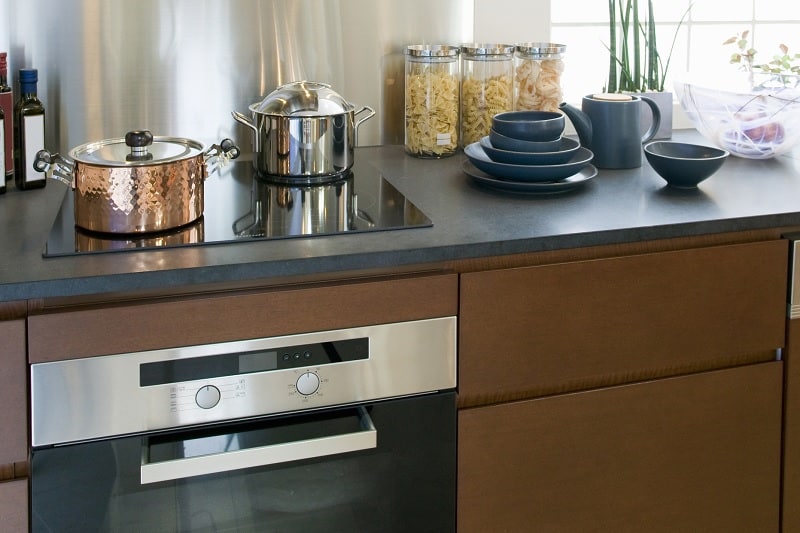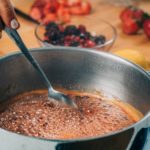Preheating a pan allows the base and sides to heat up before cooking. This is important when cooking foods on high heat, such as searing delicious steaks or frying vegetables.
The hotter the pan is to start, the better it will hold its high temperature when adding the meat or vegetables.
Less water is also released when cooking, allowing for that beautiful browning or delicious veggie crunch.
In many modern kitchens, traditional stoves have been switched for induction hobs.
So, can you heat an empty pan on an induction hob? Or will this cause the cooktop or your pans to become damaged?
Let’s find out.
Can You Preheat a Pan on Induction?
The simple answer here is yes, you can preheat a pan on induction to get it to the right temperature before cooking.
Most pans are made of highly conductive metal. This, combined with the fact that inductions hobs heat the metal directly by using an electromagnetic current rather than getting hot themselves, means your pans won’t take long to preheat and you can be browning food and searing steaks within a few minutes.
Your induction hob won’t get damaged from preheating pans either. This is again down to the efficient heating energy-based heating method.
The induction stove itself doesn’t get hot to touch, only the pan itself.
As long as you keep your induction hob clean and avoid scratching the glass surface, you don’t need to worry.
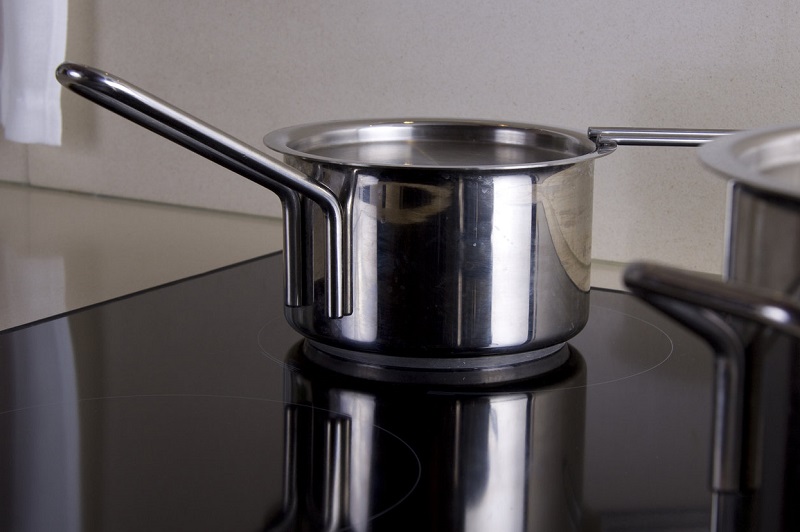
Considerations for Preheating Pans on Induction Hobs
With that said, there are a few things to remember before you put your empty pan on an induction hob to preheat. Keep these in mind and you can preheat your cookware safely:
1. Never overheat your pans
You can preheat pans on an induction hob, but the mechanism that powers these modern stoves means pans heat up extremely quickly, and overheating is a common issue.
A preheat of 1-2 minutes should be all that is needed, and ideally don’t heat the pan on a high heat setting.
Leave the pan on your stove for longer than this or at a higher than necessary temperature and it could become a hazard.
You are more likely to pick up a pan off the induction hob if it has nothing in it, without realising how hot it has got.
And the longer the pan is sitting on the stove, the hotter it becomes. This increases the likelihood of you or a family member burning themselves accidentally.
A good idea around this is to put oil or butter in the pan while it heats, rather than heating a completely empty pan.
These cooking fats start smoking at 204°C which indicates your pan is getting too warm and you should turn the temperature down and add your food.
It also acts as a visual reminder that the pan is hot to touch and thus reduces the number of burn accidents.
2. Don’t preheat non-stick pans
Have you ever had a pan lose its non-stick coating over time? This is nearly always down to overheating.
Take Teflon pans, for example. When accidentally heated to over 348°C the coating starts to deteriorate and the pan loses its non-stick quality.
You’ll then have to go out and purchase new pans, so it is best to stay safe and never preheat empty non-stick cookware.
Depending on the chemicals used to produce the non-stick coating, preheating can also potentially release toxic fumes into the air if the pan gets too hot.
Inhaling these fumes is detrimental to human health and causes a condition called polymer fume fever.
This is characterised by flu-like symptoms that last up to two days. When exposed to fumes from Teflon pans heated to 390°C, some studies even found links to lung damage.
How to Preheat Pans on an Induction Hob the Right Way
Preheating pans on an induction hob is a great skill all home cooks can benefit from. It is required for searing steaks and other pieces of meat, making for that perfect browning.
It’s also a must when sauteing vegetables, helping them to retain their delicious crunch.
However, you only reap these rewards and avoid the safety risks if preheating is done correctly. Here are some tips to preheat your pan the right way:
- Always put your induction hob to medium-high heat when preheating to avoid overheating.
- Leave the pan for no longer than two minutes before checking whether it is up to temperature.
- Add a droplet of water while you are heating the pan. When it is warm enough, the droplet will jump around the surface of the pan.
- At this point you can add oil and start cooking. If the pan is too warm, take it off the heat and leave it to cool for a few minutes, otherwise, the oil could spit back at you.
- Know you don’t need to preheat your pan for everything you cook. Rendering meat, cooking bacon, and caramelising onions all work best when you start with a cold pan.

Hannah is a freelance content writer and self-proclaimed foodie. When Hannah isn’t sitting tapping at her laptop, you’ll probably find her in the kitchen. As an ex-chalet host, she’s used to cooking four-course meals for 10+ people and loves feeding friends and family whenever possible.

